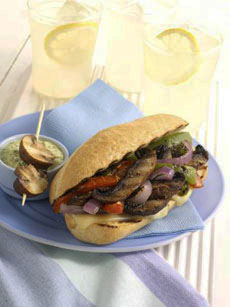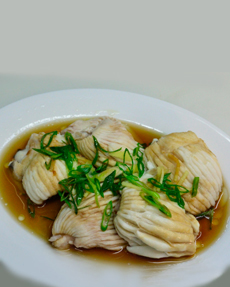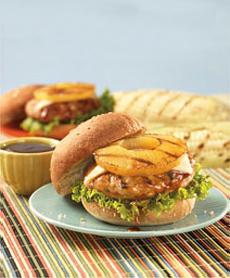
Grilled Philly Cheese “Steak” with portabella
mushrooms. Photo courtesy Mushroom
Council. |
|
TO GRILL PORTABELLA MUSHROOMS
1. Remove stems and save for another purpose (omelet, salad, etc.). Wipe the portabella caps with a damp paper towel.
2. Brush the tops with olive oil or canola oil. Cook portabellas gills down for the first 10 minutes to allow moisture to escape. Flip and grill tops.
3. Season as desired before serving.
PORTABELLA, PORTOBELLO or PORTOBELLO?
How can one mushroom, Agaricus bisporus, be known by so many names?
When young, the mushroom is variously called a baby portobello, baby bella, brown mushroom, crimini, Italian mushroom, mini bella, portabellini, Roman mushroom, Italian mushroom, or brown mushroom.
When mature, the mushroom portabella, portobella or portobello. We prefer portabella because it flows easiest off the tongue.
|
BALSAMIC REDUCTION RECIPE
Ingredients
1 cup balamic vinegar
1 clove garlic, crushed
Preparation
1. Combine balsamic vinegar and garlic in a small saucepan. Bring to a boil over medium-high heat.
2. Reduce heat to medium-low; simmer until the vinegar has reduced to 1/4 cup. Cool to room temperature.
3. Drizzle over grilled portabellas.
DO YOU KNOW YOUR MUSHROOMS?
Check out the different types in our Mushroom Glossary.
|





